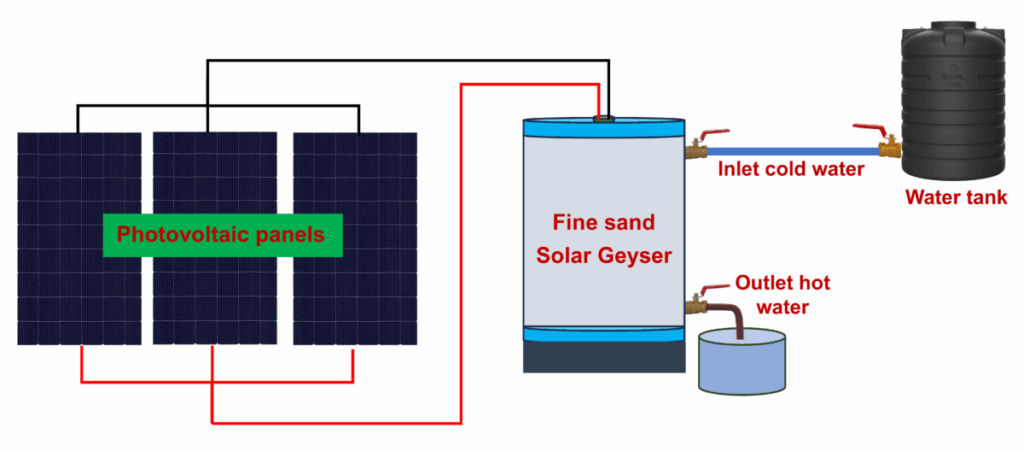The system is described by its makers as a cost -effective solution for water heating by storing thermal energy in fine sand. Techno-economic analysis indicated that the system is economically viable for domestic water heating applications, with an initial capital costs of $ 278 and an expected lifespan of 25 years.
Researchers from the National Institute of Technology (NIT) of India Kurukshetra and the National Institute of Solar Energy (NIE) Gurugram have developed a PV-driven prototype Solar Geyser system that uses a fine sand-grain storage medium for domestic hot water.
The Fine Sand Solar Geyser (FSG) is said to achieve an energy costs of only $ 0.0233 per kWh, according to its makers.
It uses electricity that is generated from PV panels to provide a nichrome wire heating rod with power, which converts the electrical energy into heat. This heat is stored in 120 kg fine sand, chosen for its high thermal mass, excellent heat limit, uniform heat distribution, low costs and abundant availability.
“The FSG system offers a sustainable, environmentally friendly and cost-effective solution for water heating by storing thermal energy in fine sand, overcoming the intermittence of solar radiation,” said researcher Dinesh Kumar Saini against PV -Magazine.
The system consists of three 300 W poly crystalline solar panels, a nichrome wire heating rod and a circular heat exchanger. During the system operation, the Nichrome thread converts PV-generated electricity into thermal energy, which is stored in fine sand. A heat exchanger with aluminum fins then transfers the stored heat to water while it goes through embedded legs.
The performance analysis of the system showed that the sand temperature within the FSG increased from 25.2 ° C to 164.2 ° C on the first working day and from 94.7 C to 211.9 ° C on the second day. The system kept 14.39 MJ and 13.02 MJ heat on these respective days and achieved thermal storage efficiency of 97.41% and 90.76% respectively.
Co-author Chandrashekara MuniyAppa further explained that the system supplied 140 liters and 152 liters of hot water for two days at a flow rate of 0.67 liters per minute. The average water temperature difference between the FSG inlet and exhaust was Included as 11.7 C and 13.75 C On these days. The system showed a discharging efficiency of around 90% on both days.
Further techno-economic analysis indicated that the system is economically viable for domestic water heating applications, with an initial capital costs of $ 278 and an expected lifespan of 25 years. The system offers energy costs of $ 0.0233 per kWh, with an expected payback period of 4.45 years.
The group described the system in the study “Thermal performance analysis of a fine sand -Zonne -Geiser integrated with photovoltaic technology“Which was recently published in Energy sources.
This content is protected by copyright and may not be reused. If you want to work with us and reuse part of our content, please contact: editors@pv-magazine.com.

